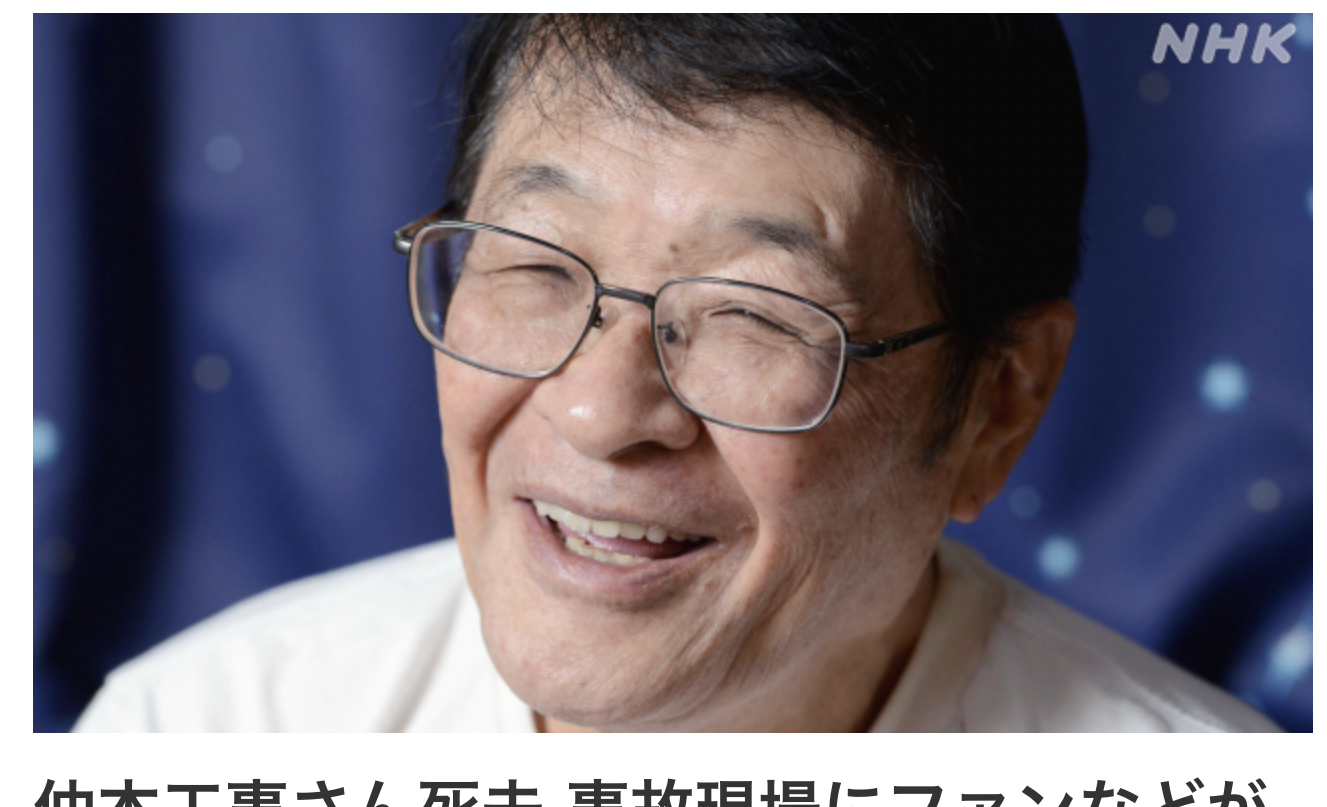和訳は英文の下にございます。/ The Japanese translation is below the English text.
The Rainbow Song And “te” Form
Contents
1. Listen to the song
2. The English translation
3. The original lyrics
4. Interesting grammar points in the lyrics
5. Interpret the lyrics
(1) The key to the interpretation
(2) "The shovel in the garden was wet all day and..." (Line 1)
(3) "The clouds went away quickly and..." (Line 2)
(4) "A rainbow is hanging in the sky!" (Refrain Line 1)
(5) "You will feel better and..." (Refrain Line 2)
(6) "It will be fine tomorrow" (Refrain Lines 3 & 4)
(7) "The laundry was wet all day and..." (Line 5)
(8) "Her picnic was postponed, she cried and..." (Line 6)1. Listen to a Japanese song
Today, we would like to share with you a happy Japanese song.
It was originally written about twenty years ago for children but it has been loved by people of all ages. I hope after reading this post, you will feel like singing it in Japanese!
The title is “Niji”; it means a rainbow. It is sung by Haida Shooko, a very expressive singer.
- The link to the song => Niji (Kitto Ashita wa Ii Tenki)
2. The English translation of the song
Title: The Rainbow [or I am sure it will be fine tomorrow]
The shovel in the garden was wet all day
The rain stopped and I sneezed
The clouds flowed away, the light came through
I looked up, and lo!
[Refrain] A rainbow! A rainbow is hanging in the sky
Your mood will also be cleared up
I am sure it will be fine tomorrow
I am sure it will be fine tomorrow
My laundry was wet all day
It was breezy and I sneezed
The clouds flowed away, the light came through
I looked up, and lo!
[Refrain]
Her picnic was postponed by a day
Her tears are now dry and she sneezed
The clouds flowed away, the light came through
I looked up, and lo!
[Refrain]
3. The original lyrics
Niwa no shaberu ga ichi-nichi nurete, ame ga agatte, kushami o hitotsu (Line 1)
Kumo ga nagarete, hikari ga sashite, miagete-mireba la la la (Line 2)
[Refrain] Niji ga niji ga sora ni kakatte (Refrain Line 1)
Kimi no kimi no kibun mo harete (Refrain Line 2)
Kitto ashita wa ii tenki (Refrain Line 3)
Kitto ashita wa ii tenki (Refrain Line 4)
Sentaku-mono ga ichi-nichi nurete, kaze ni hukarete kushami o hitotsu (Line 3)
Kumo ga nagarete hikari ga sashite, miagete-mireba la la la (Line 4)
[Refrain]
Anoko no ensoku ichi-nichi nobite, namida kawaite kushami o hitotsu (Line 5)
Kumo ga nagarete hikari ga sashite, miagete mireba la la la (Line 6)
[Refrain]
4. Interesting grammar points in the lyrics
This song has several interesting grammar points. Those are:
- Incomplete sentences (The lyricist omitted some verbs from sentences as understood)
- Missing subjects (There are sentences without subjects)
- Ambiguous subject (There is a verb which has two subject possibilities)
- Missing tenses (None of the verbs in the song has tense)
In the following sections, we will discuss them.
They may look a little difficult, but think children understand it. Or they can get the gist of it, if they can’t explain every word. It is because this is actually the way we speak (except the third point).
5. Interpret the lyrics
(1) The key to the interpretation
In this song, you find a lot of verbs in “te” form. The succession of “te” form commonly occurs in conversation. Children speak by connecting verbs like this, too.
When they say, “[verb]te, …te, …te,” they often mean “[verb], and [verb], and [verb], and…” It means they have a lot to tell us.
On the other hand, a verb in “te” form doesn’t have a mood or tense. Although we can guess their meaning a great deal by the context, in a correct sentence, a verb or auxiliary verb should follow a “te” form to clearly express the mood and tense, and to complete the sentence.
[A little more on the mood, please refer to => The Two Uses of Adjectives, Section 4, Case A. We will post a concise explanation in the near future.]
Therefore, the key to understand this song is to find the mood and tense of each verb.
In doing this, it’s helpful to know that in Japanese, the predicate (the part of the sentence which expresses the mood and tense) is typically located at the end of the sentence.
That is why, in the following sections, we will often need to look back at the prior lines and establish the tense and mood of the verbs there, after identifying a predicate. This is our thought process when translating in English.
For this reason, when you start the next section, we recommend you to copy the lyrics and line numbers on a piece of paper.
It would also be easier to sing along!
[For more on the predicate, please read: => “The Two Uses of Adjectives”, Section 4]
(2) “The shovel in the garden was wet all day and…” (Line 1)
Niwa no shaberu ga ichi-nichi nurete, ame ga agatte, kushami o hitotsu
Vocabulary list
| Word | Meaning | Notes on Grammar |
|---|---|---|
| niwa | garden, yard | noun |
| shaberu | shovel | noun |
| ga | - | particle to show the preceding word is the subject |
| ichi-nichi | all day | adverbial |
| nurete | get wet, and... | "te" form of the verb "nuremasu" |
| ame | rain | noun |
| agatte | [rain] stops, and... | "te" form of "agarimasu" |
| kushami | a sneeze | noun |
| hitotsu | one piece | noun |
The first part of this line, “niwa no shaberu ga ichi-nichi nurete” literally means “the garden’s shovel is wet all day and…”, and “ame ga agatte” means “the rain stops, and…”
We don’t know the tense yet, so we tentatively put the verbs in the present and will keep reading.
Next, the second part, “kushami o hitotsu” is an incomplete sentence; the subject and the verb are missing.
An expression “kushami o shimasu” (literally, make a sneeze) is the original expression of this part. “Hitotsu” should then mean one sneeze.
By the way, who sneezes here?
It is the speaker, or “I”.
Important! When there is no mention of the subject in Japanese, usually the subject is the speaker.
(3) “The clouds went away quickly and…” (Line 2)
Kumo ga nagarete, hikari ga sashite, miagete mireba la la la
Vocabulary list
| Word | Meaning | Notes on Grammar |
|---|---|---|
| kumo | clouds | noun |
| nagarete | flow, and... | "te" form of "nagaremasu", meaning flow |
| hikari | light | noun |
| sashite | [light] comes through, and... | "te" form of "sashimasu", come through |
| miagete-mireba | when [I] look up | conditional form of "miagemasu", look up |
In the first part of this line, “kumo ga nagarete” means “the clouds flow fast, and…”, and “hikari ga sashite” means “the light comes through the clouds, and…”
Here we begin to understand: The rain is over. Therefore, Line 1 should be translated in the past tense as:
“The shovel in the garden was wet all day, the rain stopped, and I sneezed.” (Line 1)
Next, we will return to Line 2. In the second half of the line, the subject must be the speaker again.
The speaker looks up at the sky, and what happens…?
As for the tense, we will find it in the next part.
(4) “A rainbow is hanging in the sky!” (Refrain Line 1)
Niji ga, niji ga sora ni kakatte
Vocabulary list
| Word | Meaning | Notes on Grammar |
|---|---|---|
| niji | rainbow | noun |
| sora | the sky | noun |
| kakatte | hang, and... | "te" form of "kakarimasu", hang |
The complete sentence of Line 1 in the Refrain should be then “Niji ga sora ni kakatte iru!” (A rainbow is hanging in the sky!)
The verb in “te” form followed by “iru” (=imasu) shows the present state, so we think now the speaker is looking at the rainbow. Therefore, we translate this line as follows the :
“A rainbow, a rainbow is hanging in the sky!” (Refrain Line 1)
The speaker is so excited to find a rainbow that he is repeating “niji ga!”
And now we can look back at Line 2, and be sure the tenses in the English translation should be in the past as follows:
“The clouds flowed fast, the light came through them, and when I looked up, …” (Line 2)
(5) “You will feel better and…” (Refrain Line 2)
Kimi no, kimi no kibun mo harete
Vocabulary list
| Word | Meaning | Notes on Grammar |
|---|---|---|
| kimi | you | pronoun |
| no | - | particle for the possessive |
| kibun | (someone's) mood | noun |
| mo | also | particle |
| harete | clear up, and... | "te" form of "haremasu", clear up |
About the word “kimi”: It means you, and “kimi no” means your. We think the speaker is a boy, since “kimi” is a word more often used by boys in modern Japanese. (Although girls use it to a male friend, too.)
Having said that, it means something like “Your mood is cleared up and…”
We will keep looking for its tense and mood in later sentences.
(6) “It will be fine tomorrow” (Refrain Lines 3 and 4)
Kitto ashita wa ii tenki
Vocabulary list
| Word | Meaning | Notes on Grammar |
|---|---|---|
| kitto | surely, hopefully | adverbial |
| ashita | tomorrow | noun |
| ii | good | I-Adjective |
| tenki | weather | noun |
About the word “kitto”: This is a flag word. A flag word is placed at the beginning of a sentence and predicts a certain mood or tense in the end.
In other words, “kitto” prepares the listener for a future event or action, but this sentence is lacking the verb. So, we complemented it as: “Kitto ashita wa ii tenki ni naru yo!”
“Naru” is the plain form of “narimasu”, meaning will be or will become. “Yo” here means I assure you!
Because Refrain Line 3 (as well as 4) is in the future tense, Line 2 should also be interpreted as in the future tense. Therefore, the English translation for these lines should be:
“Your mood will also clear up, and…” (Refrain Line 2)
“…I am sure it will be fine tomorrow.” (Refrain Line 3)
(7) “The laundry was wet all day and…” (Line 3)
Sentaku-mono ga ichi-nichi nurete, kaze ni hukarete kushami o hitotsu
Vocabulary list
| Word | Meaning | Notes on Grammar |
|---|---|---|
| sentaku-mono | laundry, washed clothes | noun |
| kaze | wind | noun |
| ni | by [an actor] | particle |
| hukarete | be blown by the wind, and... | "te" form of "hukaremasu", the passive verb of "hukimasu", to blow |
This line means something like “the laundry is wet all day, something is blown by the wind, and someone sneezes.” We are sure the speaker was the sneezer.
About the subject that is blown by the wind, we are not so sure. It can be the wet laundry billowing in the strong wind, or it can be that a chilly wind causes the speaker to sneeze.
We will decide it to be “I” since the line immediately after this, the first line of the refrain, takes the speaker’s viewpoint. But we think the ambiguity of the subject allows a beautiful transition of the topic.
So, our translation is:
“The laundry was hanging wet all day, I was blown by the wind and sneezed.” (Line 3)
Line 4 is identical to Line 2.
(8) “Her picnic was postponed, she cried and…” (Line 5)
Anoko no ensoku ichi-nichi nobite, namida kawaite, kushami o hitotsu
Vocabulary list
| Word | Meaning | Notes on Grammar |
|---|---|---|
| ano | that | demonstrative adjective |
| ko | child, girl | noun |
| ensoku | school trip or picnic | noun |
| nobite | be postponed, and... | "te" form of "nobimasu", be postponed |
| namida | tears | noun |
| kawaite | become dry, and... | "te" form of "kawakimasu", get dry |
At the first part of this sentence, we understand the little girl’s school trip was postponed by one day.
In the next part, whose tears got dry and who sneezed?
Here is another important grammar point! The other rule to identify the missing subject in Japanese is: It is the same subject as the most recently established. So, we will look for it.
In this case, we think it is the girl. She may not be the grammatical subject, but she is the topic of this line, so this rule still works.
So, our translation would be:
“Her excursion was postponed (due to the rain). She (was disappointed and cried, and after a while) stopped crying, and she sneezed.” (Line 5)
Line 6 is identical to Line 2.
[End of the English post]
Other posts on “How Do You Say ‘And’ In Japanese?”
=> Summary: How Do You Say “And” In Japanese?
=> How To Say “And” After Noun
=> How To Say “And” After Verb
=> How To Say “And” After Na-Adjective
=> How To Say “And” After I-Adjective
=> How Do You Say “And” As A Conjunction?
虹の歌と「て」形
目次 1.歌を聴こう 2.英訳 省略 3.原詞 4.歌詞の文法 5.歌詞の解釈 (1)解釈のカギ (2)庭のシャベルが一日濡れて‥‥(1行目) (3)雲が流れて、光が射して‥‥(2行目) (4)虹が、虹が空にかかって‥‥(繰り返し部分1行目) (5)君の、君の気分も晴れて(繰り返し部分2行目) (6)きっと明日はいい天気(繰り返し部分3、4行目) (7)洗濯物が一日濡れて‥‥(3行目) (8)あの子の遠足一日のびて‥‥(5行目)
1.歌を聴こう
今日は、日本の歌を皆さんと一緒に聞きたいと思います。
この歌はもともと子供の歌で、20年ほど前に書かれたものですが、どの年代の人にも親しまれています。あなたも、この記事を読んでから、日本語で歌ってみたいと思うかもしれません。
歌の題名は「虹」。はいだしょうこさんが表情豊かに歌います。
- 歌のリンクはこちらThe link to the song => にじ (きっとあしたはいい天気)
2.英訳 省略
3.原詞
庭のシャベルが一日ぬれて 雨が上がってくしゃみを一つ
雲が流れて光が射して 見上げてみればラララ
(繰り返し部分)
虹が虹が 空にかかって
君の君の 気分も晴れて
きっと明日はいい天気
きっと明日はいい天気
洗濯物が一日ぬれて 風に吹かれてくしゃみを一つ
雲が流れて光が射して 見上げてみればラララ
(繰り返し)
あの子の遠足一日延びて 涙かわいてくしゃみを一つ
雲が流れて光が射して 見上げてみればラララ
(繰り返し)
4.歌詞の文法で面白いところ
この歌には、いくつか文法で面白い点があります。それは、
- 不完全文 (作詞者が、既知のこととして一部の動詞を省略した)
- 主語の不在 (主語のない文がある)
- 曖昧な主語 (主語に二つの可能性がある動詞がある)
- 時制の不在 (どの動詞にも時制がない)
これは、次の節で扱います。
ちょっと難しいと思われるかもしれませんが、子どもたちが分かるのですから大丈夫です。子供たちは一つ一つの言葉を説明することはできなくても大意はつかみます。それは、日本人が実際このように話しているからなんです。(第三点は除く)
5.歌詞の解釈
(1)解釈のカギ
この歌には、たくさん「て」形の動詞がありますね。会話では、「て」形を次々に続けることはよくあります。子どもたちも同様に、こうして、動詞を並べて話します。
子どもたちが「[動詞]‥‥て、‥‥て、‥‥て、」と言う時は、たくさん話したいことがあるのです。
一方、動詞の「て」形にはムードや時制がありません。意味は文脈からだいたい推測できるけれど、正しい文では動詞や助動詞が「て」形の後に来て、ムードや時制を明らかにし、文を結ぶものです。
[ムードについてはほんのちょっとですが、右をご参照ください => 『形容詞の二つの使い方』第4節、ケースA。近いうちに、簡単な説明を投稿する予定です]
ということで、この歌を理解するカギは、各動詞のムードと時制を見つけることです。
この時、日本語では述部(ムードや時制を表す部分)が普通文末にあることを知っていると役に立ちます。
次の節では、述部を探し当てた後で前の行へ戻り、そこにある動詞のムードと時制を確定する作業が頻繁に必要になります。これが私たちが英訳するときの思考プロセスです。
ですから、まず歌詞と行数番号を紙に書き写すことをお勧めいたします。
そうすれば、歌を歌うときも使えますし!
[述部については、次をご参照ください => 『形容詞の二つの使い方』第4節]
(2)庭のシャベルが一日ぬれて、雨が上がってくしゃみを一つ (1行目)
語彙リスト
| ことば | いみ | ぶんぽうメモ |
|---|---|---|
| にわ | garden, yard | めいし |
| シャベル | shovel | めいし |
| が | - | まえのことばがしゅごであることをしめすじょし |
| いちにち | all day | ふくし |
| ぬれて | get wet, and... | どうし「ぬれます」の「て」けい |
| あめ | rain | めいし |
| あがって | [rain] stopped, and... | 「あがります」の「て」けい |
| くしゃみ | sneeze | めいし |
| ひとつ | one piece | めいし |
まず、行の前半、「庭のシャベルが一日ぬれて」と「雨が上がって」についてはまだ時制がわからないので、次の行以降で探していきます。
次に、この行の後半の「くしゃみをひとつ」は、不完全文です。主語と動詞が欠けているからです。
「くしゃみをします」がもとの表現で、「ひとつ」は一回という意味になります。
ところで、誰がくしゃみをするのでしょうか。
それは、話し手、または「自分」です。
重要ポイント! 日本語では、主語がない文があったら、だいたいは話し手が主語です。
(3)雲が流れて、光が射して、見上げてみればラララ (2行目)
語彙リスト
| ことば | いみ | ぶんぽうメモ |
|---|---|---|
| くも | clouds | めいし |
| ながれて | flow, and... | 「ながれます」の「て」けい |
| ひかり | light | めいし |
| さして | [light] comes through, and... | 「さします」の「て」けい |
| みあげてみれば | when [someone] look up | 「みあげます」のじょうけんけい |
この行の最初の部分は、「雲が流れて」と「光が射して」です。
それで、話が分かってきました。雨は終わったのです。ですから、1行目の英訳は過去時制を使って、以下のようになります。
「庭のシャベルは一日中ぬれていました。雨が上がりました。そして、僕はくしゃみをしました」(1行目)
次に、2行目に戻ります。行の後半で、空を見上げるのは、やはり話し手です。
この文の時制は、次の部分ではっきりします。
(4)虹が、虹が空にかかって (繰り返し部分1行目)
語彙リスト
| ことば | いみ | ぶんぽうメモ |
|---|---|---|
| にじ | rainbow | めいし |
| そら | the sky | めいし |
| かかって | hang, and... | 「かかります」の「て」けい |
繰り返し部分の1行目の完全な形は、「虹が空にかかっています!」だと思います。
「て」形の動詞のあとに「いる」があると現在の状態を表しますから、今話し手が虹を見上げているのだと思います。したがって、訳はこうなります。
「虹が、虹が空にかかっている!」(繰り返し部分1行目)
話し手は虹に気づいて興奮して、「虹が」を二回言っています。
さて、ここで2行目にもどります。この文は次のような過去形の文になることが分かります。
「雲が流れていきました。光が射しました。そして、見上げたら、」(2行目)
(5)君の、君の気分も晴れて (繰り返し部分2行目)
語彙リスト
| ことば | いみ | ぶんぽうメモ |
|---|---|---|
| きみ | you | だいめいし |
| の | - | しょゆうをしめすじょし |
| きぶん | ひとの | めいし |
| も | - | じょし |
| はれて | clear up, and... | 「はれます」の「て」けい |
なお、私たちは、この話し手は男の子だと思います。「きみ」は現代の日本語では男の子がより多く使う言葉だからです。女の子が男の友達に使うこともあります。
ということで、これは「君の気分がよくなって、そして‥‥」という意味です。
時制とムードについては、この後の文で探します。
(6)きっと明日はいい天気 (繰り返し部分3、4行目)
語彙リスト
| ことば | いみ | ぶんぽうメモ |
|---|---|---|
| きっと | probably, hopefully | ふくし |
| あした | tomorrow | めいし |
| いい | good | イけいようし |
| てんき | weather | めいし |
「きっと」は、合図言葉です。合図言葉とは、文頭にあって、文末に来るムードや時制を先取りして伝える副詞的な表現です。
「きっと」と聞くと、聴き手は未来の出来事や行動の話を予想します。ただ、この文には動詞がないので、私たちが補いました。「きっと明日はいい天気になるよ!」になります。
「なる」の後の「よ」は請け合うよ、という意味です。
繰り返し部分の3行目は未来時制なので、2行目も未来時制で理解します。したがって、
「君の気分もよくなるよ。そして、」(繰り返し部分2行目)
「明日はいい天気になるよ。」(繰り返し部分3行目)
(7)洗濯物が一日ぬれて、風に吹かれてくしゃみを一つ(3行目)
語彙リスト
| ことば | いみ | ぶんぽうメモ |
|---|---|---|
| せんたくもの | laundry, washed clothes | めいし |
| かぜ | wind | めいし |
| に | by [an actor] | じょし |
| ふかれて | be blown by the wind, and... | 「ふきます」のうけみどうしである「ふかれます」の「て」けい |
この行は、「洗濯物が一日ぬれている。そして、何かが風に吹かれている。そしてだれかがくしゃみする」ということです。くしゃみをするのは話し手だと思います。
風に吹かれているものについては、はっきりしません。強い風にはためいている濡れた洗濯物か、または、風が少し寒く、話し手がくしゃみをするということか。
私たちは、話し手であることにします。この行の直後、繰り返し部分1行目が、話し手の視点だからです。でも、この部分の主語の曖昧さが話題をきれいに移行させていると思います。
ですから、完全な文にするなら、次のようになります。
「洗濯物は一日中ぬれていました。そして僕は風に吹かれてくしゃみをしました」(3行目)
4行目は2行目と同じです。
(8)あの子の遠足一日のびて、涙かわいて、くしゃみを一つ (5行目)
語彙リスト
| ことば | いみ | ぶんぽうメモ |
|---|---|---|
| あの | that | しじけいようし |
| こ | child, girl | めいし |
| えんそく | school trip or picnic | めいし |
| のびて | be postponed, and... | 「のびます」の「て」けい |
| なみだ | tears | めいし |
| かわいて | become dry, and... | 「かわきます」の「て」けい |
5行目の最初の部分で、小さな女の子の遠足が一日延びたことがわかります。
次の部分ですが、誰の涙が乾いて、だれがくしゃみをしたのでしょうか。
もう一つの重要ポイント! 日本語で、欠けた主語を補うもう一つのルールは、最後にはっきりしていた主語と同じだということです。ですから、それを探します。
この場合は、この女の子だと思います。この女の子は文法的な主語ではないけれど、この行の主な話題ですから、このルールは当てはまります。
従って、完全な文は、次のようになります。
「あの子の遠足は(雨で)一日延びました。あの子は(がっかりして泣きましたが、やがて泣きやんで)涙がかわきました。そして、くしゃみをしました」(5行目)
6行目は2行目と同じです。
[和文部終わり]
「日本語でAND…は何という?」 の関連記事
=> まとめ記事:日本語でAND…は何という?
=> 名詞の後でAND…をどう言うか
=> 動詞の後でAND…をどう言うか
=> ナ形容詞の後でAND…をどう言うか
=> イ形容詞の後でAND…をどう言うか
=> 接続詞としてのANDは何と言う?




